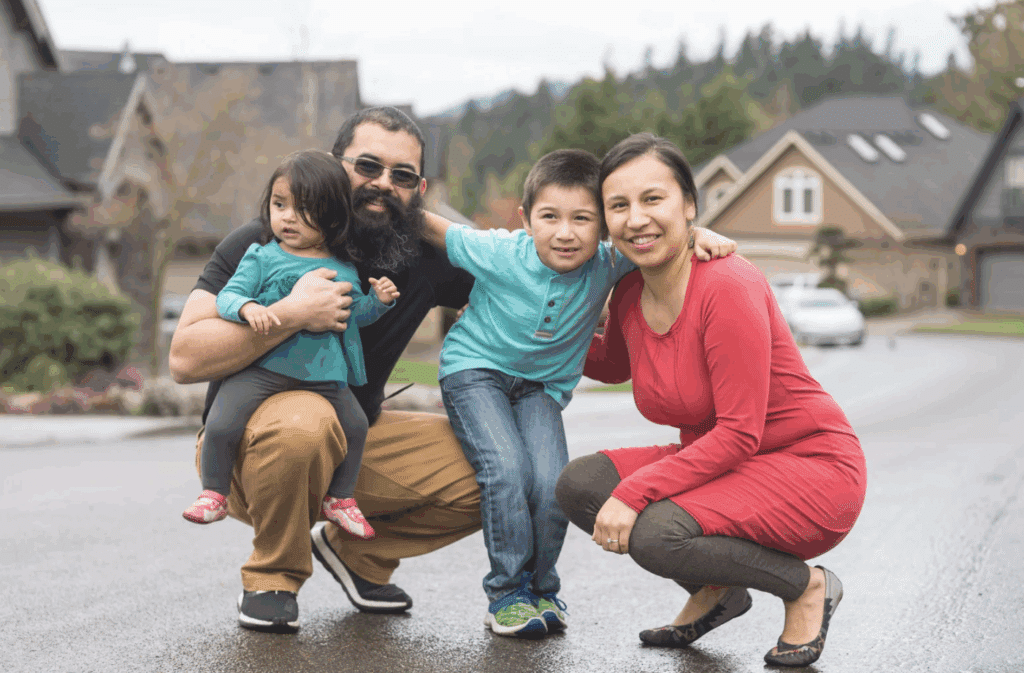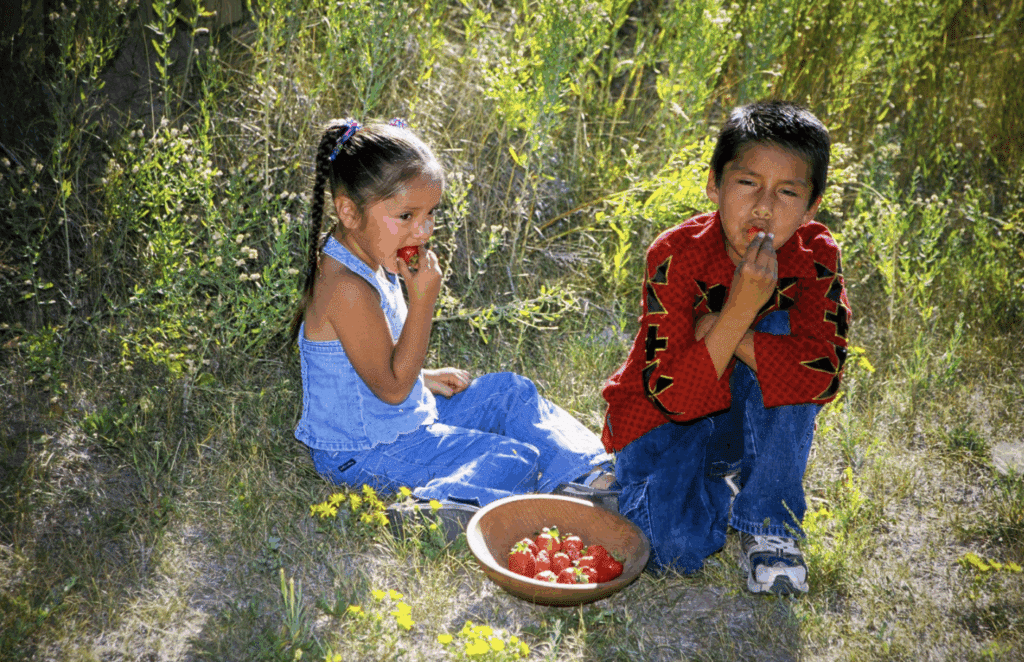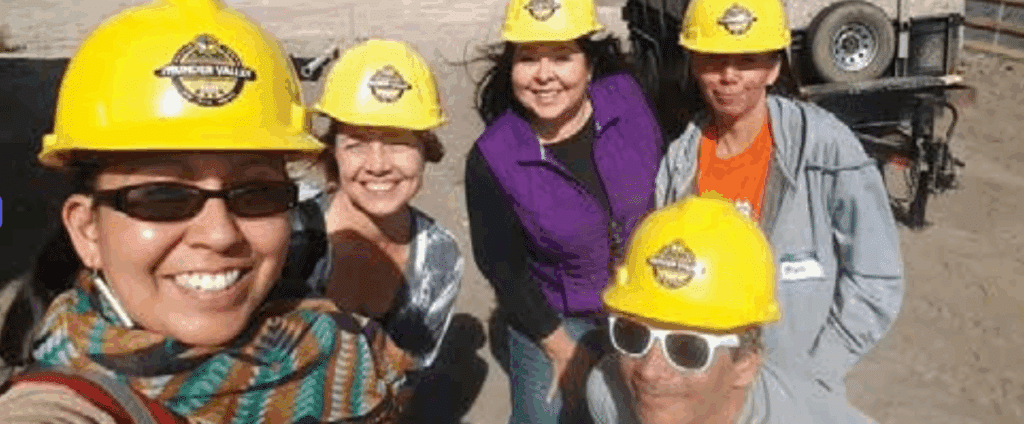View this Publication
When Native nations thrive, they tend to lift up the non-Indigenous communities that are their neighbors. This is particularly true in rural areas, where Native nation governments, tribal businesses, and Native nation citizens represent a larger proportion of the local governance infrastructure, economy, and population than in urban areas and thus generate a larger share of local jobs, spending, and tax dollars.
This second product in the Thrive Rural Field Perspectives series shows that when tribes center sovereignty, Indigenous institutions, and culture in their development processes, they increase the probability of reaching their development goals and can build community wealth that is more aligned with tribal values and lifeways. The authors also highlight how Native nations and rural communities, working side-by-side and together, can strengthen the potential for thriving rural regions.
Native nation building is the process of “building and rebuilding the legal, political, and social institutions that undergird the realization of community core values and the successful pursuit of community-determined goals.”
THE LEGACY OF COLONIZATION
Two centuries of repressive U.S. government policies have taken a toll, rendering Native communities – especially rural Native communities – among the poorest in the United States.
Before the United States of America was formed, more than 600 different nations and tribes called this vast region home. Native peoples stewarded some 1.5 billion acres of land, water, and other natural resources. Relying on place-based ecological knowledge accumulated over centuries, tribes:
• Engaged in highly successful small- and large-scale resource management and production practices.
• Supported community health and healing through culturally balanced relationships with lands, waters, and wild medicines and foods.
• Operated self-sufficient economies that met community needs and enabled the development of far-reaching trade networks.
• Organized and sustained complex governing and ceremonial systems that provided public goods, educated community members, resolved disputes, and managed intergovernmental relationships.
Both oral history and physical records emphasize the know-how, adaptability, and innovative spirit of America’s pre-colonial Indigenous peoples. Soon after its founding, however, the United States government began a vigorous and long-lasting program to strip Native peoples of their assets, destroy their communities, and compel assimilation with the newly dominant European immigrant society. One set of orchestrated federal policies “removed” (evicted) eastern tribes from their lands and forced them to move west. Another, initiated by the Indian Appropriations Act of 1851, confined midcontinental and western tribes to reservations. Tens of thousands of Indians died during these involuntary migrations and periods of virtual imprisonment on marginal land bases; looking across the entire period of European colonization, estimates suggest that by the end of the 19th century, the American Indian population had decreased by 90 percent as a result of disease, starvation, and genocide.
At least until the late 20th century, U.S. government policies supporting land allotment, child removal, urban relocation, tribal termination, Indigenous language suppression, and jurisdictional limitations meant that tribes’ land holdings, community cohesion, and cultural patrimony remained under constant threat – and created Native communities in which high rates of socioeconomic distress were the norm. By 1980, 41.1 percent of all self-identified American Indians and Alaska Natives living on (largely rural) tribal lands were in poverty, as compared to 30.9 percent of Native Americans overall, 29.5 percent of Black Americans, 25.3 percent of Hispanic Americans, and 10 percent of white Americans.
This history has created a contemporary landscape in which Native Americans and Native nations are easy for mainstream U.S. populations and governments to ignore. Today, while there are 574 federally recognized tribes and 63 state-recognized tribes, Native polities together own fewer than 57 million acres, or less than 4 percent of their original land assets. Further, these reserved lands are largely out of sight to the urban-majority U.S. population. An oft-repeated statistic is that more than 70 percent of Native people live in cities, but this statement is both inaccurate and harmful. For one thing, it draws attention away from the significant presence of Native peoples and tribal governments in rural areas, not only as full-time residents of reservation and near-reservation areas but also as part-time residents who regularly travel between their home communities and urban areas for education and work. For another, it de-emphasizes the political status that many individuals have as tribal citizens in favor of a reductive understanding of Native Americans as one more racial/ethnic group in the urban mix.
Despite the best efforts of the Census Bureau to generate a full population count of Native Americans in 2020, other data issues contribute to the invisibility of tribal citizens and tribal nations: Small sample sizes and privacy protections prevent the calculation of key descriptive measures such as poverty, employment and income both for the population of Native Americans as a whole and for specific tribal communities.
More often than not, Native populations are only included in important research and policy documents with an asterisk, indicating that too little data was gathered to generate statistically significant results.
NOT AN ASTERISK POPULATION
Yet especially in rural areas, Native Peoples must not be overlooked. Newly released data show that the Census-enumerated American Indian and Alaska Native population grew by 87 percent between 2010 and 2020. To the extent that population patterns in 2010 persisted into 2020, a majority (68 percent) of the Native population lives on or near reservations, and a majority (54 percent) resides in rural and small-town areas. Recent estimates also suggest that Native nations’ combined annual impact on the U.S. economy is $130 billion. Specific local examples of these figures highlight the importance of rural tribes in their rural regions: The Gros Ventre and Assiniboine Tribes’ Island Mountain Development Group alone supports more than $33 million in business sales in Blaine County, Montana; and, with more than 1,500 Native and non-Native employees, the Hualapai Tribe is the second-largest employer in Mohave County, Arizona.

Such figures are the result of a revised script for successful Indigenous community and economic development that Native nations have been writing and refining since the mid-1970s when the U.S. government’s Indian policy finally tilted away from removal and repression. As a result, many Native nations were able to leverage the authorities and opportunities arising from their status as First Peoples – and make gains against the long-standing problem of reservation poverty and the many social, health and environmental stressors that poverty generates. The approach they took, which has come to be known as Native nation building (or rebuilding), is rooted in tribal sovereignty: the governing powers that Native nations possess as independent political entities that predate European settlement, and that have not been extinguished.
CHARACTERISTICS OF SUCCESSFUL NATIVE NATIONS
Today, Native nation building is also an evidence-based approach. Nations that were able to break away from the typical story of economic and social distress offered an ideal cohort for inquiry from researchers asking: What factors distinguish vibrant Native nations from those that appear to lack community efficacy? Or, why do some Native nations thrive, and others do not? Their findings point to five characteristics shared by tribes that are meeting their community development goals – characteristics that are less present among tribes that do not meet them:
- Self-determination: Native nations that are achieving their goals actively exercise decision-making authority over the issues that matter to them, and work to increase that authority. Whether called sovereignty, jurisdiction or self-determination, this characteristic is about taking responsibility on issues where the nation desires change.
- Capable institutions: Native nations that are achieving their own goals on their own terms know that assertions of sovereignty and jurisdiction are not enough. Capable governing institutions make it possible for Native nations to exercise sovereignty effectively, consistently and fairly.
- Cultural match: Not just any governing institutions will do. Institutions must be able to get the job done and “match” community members’ expectations for how decision-making authority should be allocated and organized. When a Native nation’s institutional structure fits its political culture, the community is more likely to view those institutions as legitimate and acceptable and to trust that their government and the organizations of civil society will work on behalf of their collective goals
- Strategic orientation: Thriving Native nations look to the long term. Leaders and community members understand the importance of proactive rather than reactive thinking, of systemic rather than siloed approaches, and of balancing present needs against their concerns about the future.
- Community-spirited, nation-building leadership: Native nations that are achieving their goals benefit from leaders – be they elected, grassroots, spiritual, political, nonprofit, youth or elder leaders – who are focused more on what they can do for the community than on their own personal gain. They understand the work that the nation has set for itself and see their own role as helping to achieve those goals. Relevant to this discussion, nation-building leaders often operate at an intercultural interface, serving their nations while also navigating non-Indigenous systems and negotiating with outside governments.
In sum, Indigenous nation building is the process of “building and rebuilding the legal, political, and social institutions that undergird the realization of community core values and the successful pursuit of community-determined goals. It demonstrates that when tribes center sovereignty, Indigenous institutions, and culture in their development processes, they increase the probability of realizing their goals. A Native community’s economic circumstances – its location, labor pool, human capital, natural resources, etc. – also matter to tribal community development, but they tend to pay off after a Native nation has been able to structure capable, culturally legitimate institutions of self-government. Likewise, grants, preferential treatment in government and corporate procurement processes, and tax or regulatory advantages (of which tribal gambling enterprises are one example) are helpful inputs and policies, but they are not root causes of tribal development; such opportunities are more likely to yield lasting benefits when self-determined and self-governing Native nations put them to effective and strategic use.
NATION BUILDING ON THE GROUND

Admittedly, there are many ways in which Native nation building is exclusive. It is focused on Native communities; it can only be implemented by Native nations themselves; and its results are aimed at Native individuals, families and children. This is rightly so. As noted earlier, two centuries of repressive U.S. government policies have taken a toll, rendering Native communities – especially rural Native communities – among the poorest in the United States. Today, solutions that are squarely focused on improving the lives and livelihoods of Native people are both needed and justified.
Some nation-building efforts have been implemented by tribal communities alone – by tribal governments, by Native nonprofit organizations, or by Indigenous grassroots activists. Others have been implemented in collaboration with non-Indigenous governments, organizations and community members. Some approaches may feel familiar to non-Indigenous people, while others may seem unrecognizable or reflect theories of change that are unfamiliar in the mainstream policy tradition. While not irrelevant, these operational details are not what matters to a rural development discussion; what matters is that these activities emerge from Native nations’ own, self-determined decisions about what will strengthen their governments and communities.
- For example, the Menominee Nation has focused on nation rebuilding as a key strategy for overcoming the devastation of “termination” – that is, the unilateral decision by the U.S. federal government to end its relationship with the Menominee Nation that took effect in 1961. After much advocacy from tribal citizens, Congress and President Nixon restored the tribe in 1973, and the Menominee Nation, which shares geography with an area in northeastern Wisconsin, embarked on a concerted effort to write a new tribal constitution, engage citizens, and create a values-based enterprise management structure at arms-length from tribal politics. The tribe was able to re-assert sustained yield management for its timber enterprise and re-establish a forest management system that has resulted in more standing saw timber volume now than in 1854. Known today as one of the world’s greatest examples of a sustainable forest, the Menominee Nation’s timber enterprise not only employs some 300 tribal and non-tribal members and contributes resources to help support tribal government operations, but also has received international recognition for its management practices and is the only forest operation that holds a dual environmental certification from both the United States and Canada.
- Four Bands Community Fund, a Native community development financial institution (Native CDFI), is a 501(c)3 nonprofit organization located on the Cheyenne River Sioux Reservation, which shares geography with the state of South Dakota. It is part of a larger movement in which Native CDFIs, Native community development corporations, and Native federal credit unions are making significant contributions to equitable rural development. Native communities use these institutions to overcome a variety of access-to-capital barriers, including limited financial education and low credit scores among tribal citizens and a lack of knowledge in the formal banking sector about lending on tribal lands. Four Bands’ impact on rural Native America is evident in its two decades of success at educating Native community members, providing start-up and expansion capital for Native-owned businesses, and lending to support reservation-based homeownership – and more recently, via its designation earned in March 2021, as an approved lender in the U.S. Department of Agriculture’s Farm Service Agency Guaranteed Farm Loan Program.
- In the Akwesasne (Saint Regis) Mohawk community, which shares geography with the very rural northern part of New York state and the southern reaches of the Canadian provinces of Ontario and Quebec, nation-rebuilding efforts include the work of grassroots leaders who are reviving traditional coming-of-age ceremonies for the tribe’s young people. Originally conceived for young women, the Ohero:kon (“Under the Husk”) program now also engages young men, taking cohorts of each gender through a rigorous multi-year course of cultural, health, environmental, leadership and spiritual learning. The culminating challenge, toward which all the training is pointed, is a four-day, four-night solo fast in the woods. Assessment suggests that Ohero:kon has had positive effects on key indicators of youth behavioral, mental and physical health, such as reductions in teen pregnancy and juvenile delinquency. It also has helped mobilize the entire community, as large numbers of adult citizens have become involved in helping to shape the nation’s future leaders.
NATIVE NATION BUILDING: A FOUNDATION FOR REGIONAL RURAL DEVELOPMENT
Important to the broader conversation about rural development, Native nation building also can spread the wealth: When Native nations thrive, they tend to lift up the non-Indigenous communities that are their neighbors. Through nation building, tribe after tribe has built a strong foundation on which its own development can proceed. In so doing, tribe after tribe has become the economic and governmental anchor of its local region. This is particularly true in rural areas, where Native nation governments, tribal businesses, and Native nation citizens represent a larger proportion of the local governance infrastructure, economy and population than in urban areas, and thus generate a larger share of local jobs, spending and tax dollars. The Gros Ventre and Assiniboine Tribes, Hualapai Tribe, and Menominee Nation examples, offered above, are not isolated examples.
The benefits to non-Native rural residents arise in large part from the intertwined nature of rural and reservation communities. The dispersed nature of retail, education, banking, arts, entertainment, housing and other sectors in rural areas means that Native nation citizens who live locally are working, shopping and living side-by-side with non-Natives – and, in particular, that the benefits arising from tribal citizens’ financial and human capital gains are spread throughout the region. Checkerboarding – that is, the land-holding pattern in which reservation land is interspersed with non-reservation land – means that benefits from better environmental management, fire suppression practices, and law enforcement spill over to non-Indian owned lands and the non-Indigenous communities that own and use those lands.
However, unintended and “by chance” benefits need not be the only option. Native nations and rural communities can work jointly to develop projects and programs with planned mutual benefits. Indeed, there are dozens (if not hundreds) of examples of Native nations and local rural communities working in conscious partnership, in policy areas ranging from law enforcement to environmental protection to public health provision. One noteworthy example is the Scott County Association for Leadership and Efficiency (SCALE) in exurban/rural Minnesota, a collaboration in which the Shakopee Mdewakanton Sioux Tribe is a key partner. SCALE has created a unified regional transit system, a mobile crisis-response team, and a countywide fiber optic network. Another is Marimn Health, a rural, community-based outpatient healthcare system in Benewah County, Idaho, which the Coeur d’Alene Tribe and municipality of Plummer together operate – and which neither could have afforded on its own. In Pottawatomie County, Oklahoma, the Citizen Potawatomi Nation operates Rural Water District 3, whose 1,300 customers include residents, businesses, churches, schools and fire departments; the tribe purchased the then-insolvent district in 2005 and has managed it on a solvent, not-for-profit basis ever since.
STRATEGIES FOR EQUITABLE RURAL DEVELOPMENT: A NATIVE NATION PERSPECTIVE
These observations point to important strategies for how Native nations and rural communities can work both side-by-side and together toward thriving rural regions. They also suggest ways that, to the extent that growth has been inequitable, more equitable rural development from a Native perspective might occur.
- First and foremost, equitable rural development from a Native nation perspective requires rural communities, and their governments and civil society organizations, to acknowledge the sovereignty of federally and state-recognized American Indian tribes and Alaska Native nations. It is impossible not to conclude: If Native nation sovereignty and core values matter to tribal community development, in rural regions where tribes are prominent, Native nation sovereignty and core values must matter to rural community development as well – and should be recognized and honored. Importantly, recognition of a tribe’s sovereignty should occur when a rural community enters into discussions with tribes and throughout the entire engagement – and, wherever possible, should be supported through the creation of government-to-government and leader-to-leader relationships.
Honoring sovereignty means that non-Native rural governments and organizations should stand aside while a Native nation makes decisions about its community that align with its political status and core values. Honoring the sovereignty of Native nations means that non-Native actors in rural communities should work to strengthen the nation-to-nation relationship between the United States federal government (and its constituent state and local governments) and tribal nations. And honoring sovereignty means that non-Native rural community stakeholders should support the efforts of the neighboring Native nations, regardless of whether the outcome is beneficial to their own communities. - Equitable rural development from a Native nation perspective requires relationship-building between Native communities and their non-Native local and regional counterparts. Successful collaborations are founded on strong relationships, ones that embody respect and mutuality. In the best Native nation-rural community collaborations, Native nations and their non-Native partners work together in ways that respect tribal sovereignty by elevating issues and actions that are important to tribes. At heart, allies are saying, “This is important to all of us.” They are acknowledging that the preservation of American Indian and Alaska Native nations is important, and that tribes and tribal people have knowledge, ideas and perspectives that are valuable to the broader community.
But such relationships do not spring fully formed from signatures on a memorandum of understanding. Building and sustaining official relationships, as called for above, and even building and sustaining personal relationships, which often are at the heart of rural community development, can be challenging, given the history of colonization, broken treaties, exploitation, and systems of oppression endured by Native nations and individuals. One key barrier is resources. Relationship building requires the ability to meet regularly, so that principals can get to know one another, discuss core values, explore mutual interests, and identify common goals – all of which take time and, often, money. This is an area where philanthropy might make a critical difference by providing funding to help fill the resource gap. Some of this support may need to flow disproportionately to tribes, tribal organizations, and grassroots Native collaboratives, as they may be particularly disadvantaged with regard to the availability of resources to support partnership and relationship building. Philanthropy also can help by advocating (with dollars, as necessary) for the engagement of Native facilitators, for convening meetings on tribal lands, and for holding a series of meetings (that is, not just one) – all modifications to the “usual” approach that can be beneficial for addressing power issues, managing disagreement, and arriving at equitable solutions. - Equitable rural development from a Native perspective requires accurate data and timely data collection. Poor data about America’s Indigenous Peoples continue to challenge the inclusion of American Indian and Alaska Native people in the rural discussion and to discount their impact on rural America. Accurate data allow policymakers, government officials, organizations and influencers, philanthropic and social investors, and community practitioners to view Native communities and their contributions in more meaningful and substantial ways – ways that lead to more resources and better outcomes for both rural reservations and surrounding local regions. Without a correct, up-to-date data picture, it is also difficult to estimate any change or to demonstrate progress. Notably the creation and maintenance of accurate data is a challenge ripe for rural-tribal collaboration, as statistical significance and differential privacy problems plague both Native and rural communities. At the same time, efforts to develop an initial baseline of accurate information about a Native community, and to maintain and update such data, should be Indigenous-led; Indigenous sovereign rights extend to data as well.

Empirical evidence supports the concept that when Native nations strengthen their self-determination and self-government, they can build community wealth that is more in line with tribal values and lifeways. This, in turn, leads to improvements in a tribal community’s health, culture and environment. Anyone driving through the lands of the Winnebago Tribe of Nebraska, a tribe that has embraced the principles of Native nation building and that is meeting its economic and community development goals, can actually see and hear about this success – as it is evident in wellness trails, contemporary middle-class housing, a grocery store with ample healthy options, public art, well paved roads, return migration, and low unemployment rates.
And this is just one of many rural Native communities that, through the exercise of tribal sovereignty, is increasing the well-being and prosperity of tribal citizens and creating a thriving rural sector. As it and other Native nations build businesses, increase employment opportunities, expand home ownership, and improve the overall livelihoods of their people, related economic, social, cultural, and environmental multiplier effects help ensure that tribal success propels prosperity in surrounding rural regions.
ABOUT THE FIELD PERSPECTIVES SERIES: The series aims to catalyze more effective and fair rural policy and practice. In this series, we ask thinkers and doers with rural experience and expertise to propel and deepen understanding about rural issues and realities, shine a light on rural innovation and investment opportunities, connect and align fields of practice and interest, and call for constructive changes in the design and implementation of key public and private systems – all toward achieving this outcome: Communities and Native nations across the rural United States are healthy places where each and every person belongs, lives with dignity and thrives.

Miriam Jorgensen: Miriam Jorgensen is a political economist and policy scholar. Her work—in the United States, Canada, and Australia—has addressed issues as wide-ranging as housing, cultural stewardship, natural resources, land ownership, financial education, housing, and criminal justice, and focuses on the ways Indigenous nations’ governance and sociocultural characteristics affect community development. She currently serves as research director of both the University of Arizona Native Nations Institute and the Harvard Project on American Indian Economic Development.

Stephanie Gutierrez: A member of the Oglala Sioux Tribe of South Dakota, Stephanie has committed her life to working with and for Native communities. She is founder of Hope Nation, which provides transformational leadership and capacity building services to Indigenous and rural communities. Blending her business background with her social work degree and coaching practice, she provides a holistic approach to her work in child welfare, economic development and community development.








